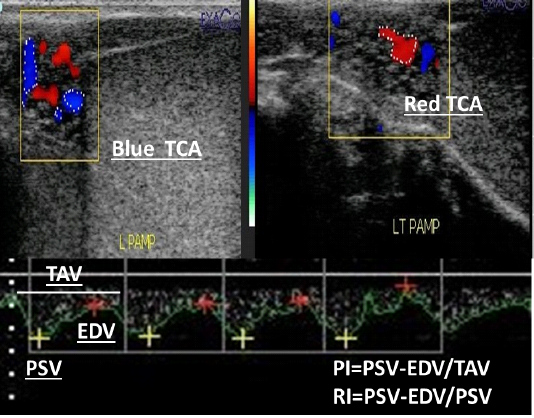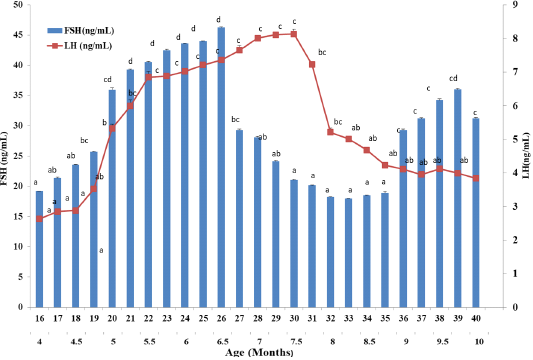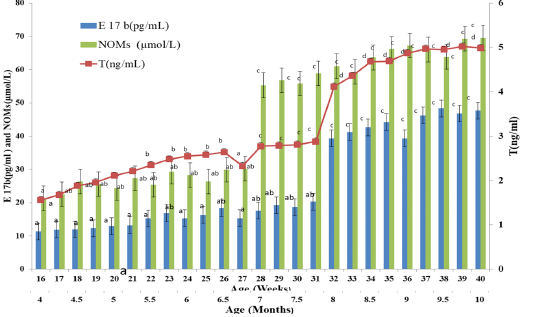Reproductive Hormonal Levels and Nitric Oxide Levels as Guides of Pubertal Reproductive Development in Relation to Testicular Width and Hemodynamics in Baladi Bucks
Reproductive Hormonal Levels and Nitric Oxide Levels as Guides of Pubertal Reproductive Development in Relation to Testicular Width and Hemodynamics in Baladi Bucks
Khlood G. Abdelkhalek*, Aly B. A. Badawy, Mohamed Fathi, Elshymaa A. Abdelnaby
Color mode ultrasonograms showed the measurement of both blue and red testicular colored areas (TCA) either away or toward the probe with the presence of spectral wave graph that determined how to measure both Doppler indices (PI; pulsatility index and RI; resistive index) through different automatic equations using peak systolic velocity (PSV; cm/sec), end diastolic velocity (EDV) and time average to complete the cardiac cycle (TAV; cm/sec).
Levels (Mean ±standard error of mean (SEM)) of follicle stimulating hormone (FSH; ng/mL), and o luteinizing hormone (LH; ng/mL ) in Baladi bucks between 4- and 10-months-old. Different superscripts indicate significant differences (P<0.05).
Levels (Mean ± standard error of mean (SEM) of estradiol (E2 17β; pg/mL), testosterone (T; ng/mL), and nitric oxide metabolites (NOMs; µmol/L) in Baladi bucks between 4-months and 10-months-old. Different superscripts indicate significant differences (P <0.05).









